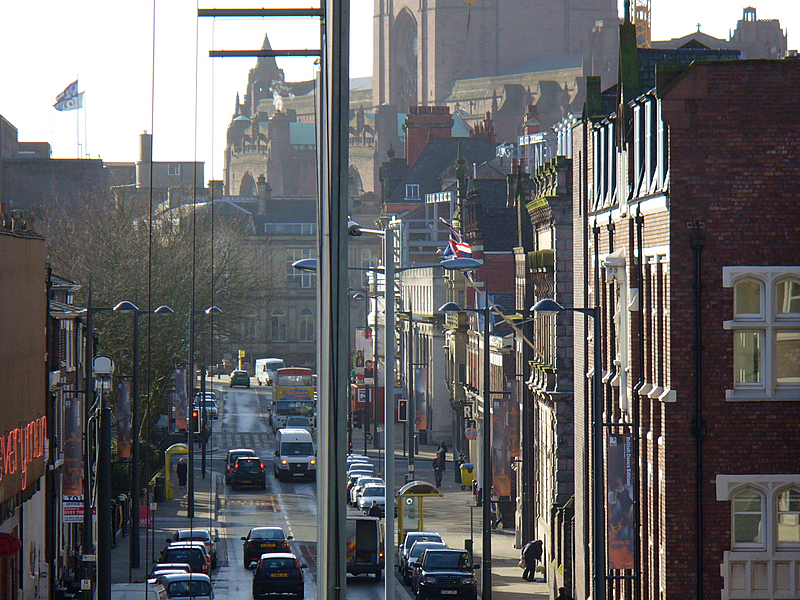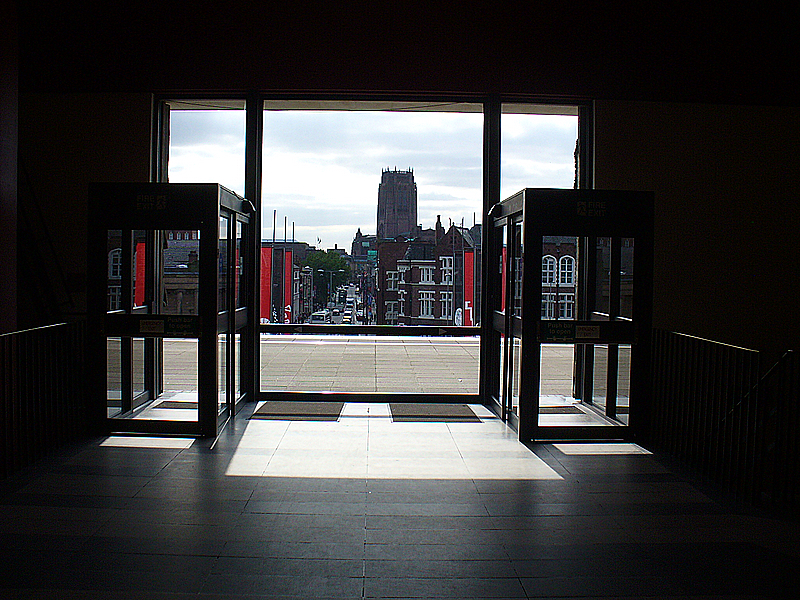There was, at the time, considerable public concern about the plans which Maghull then presented for agreement by Liverpool city council - plans which included demolition of the LJMU Josephine Butler House.

The small patch of land on which it stands, at the corner of Hope Street and Myrtle Street, is the only non-conservation site in the Hope Street quarter - a surprise, not only because several organisations have been repeatedly urging the city council to rectify this oversight for years, but even more so because Josephine Butler House was, before its academic use, the home of the first Radium Institute in the UK.
Worse, however, was to come.
When the Maghull demolition plans were lodged, several bodies and individuals launched objections and a move was made to have Josephine Butler House listed (it would have been protected without further ado, if within the conservation area), or the permissions for the development refused. Liverpool Riverside MP Louise Ellman called on the council to put a preservation notice on the building.
None of these actions was achieved.

Instead, before any of this could happen, and a few days before a city council planning committee site visit, scaffolding was erected around JB House, and hammers were applied to almost all the frontage of this, until then, quite useable building.


Amazingly, the city council - who might well be judged to have been cocked a snook by these actions - then capitulated to the planning request to demolish it, perhaps because by now the building was in a state of disrepair.
And this is where, a year later, things still ?stand?. The tarpaulins have fallen from the building and the scaffolding has gone, leaving a huge, gaping, sorry and derelict building, previously a very decent example of the construction of its time, at the heart of Hope Street.
In the latest move, the apparently-credit-crunched owners, Maghull, have succeeded in another application to the city council - to use the land it would acquire by razing Josephine Butler House, not to create a commercial, ?boutique hotel? development as originally intended, but to lay... a 16-place car park.
Residents of the adjacent Symphony apartments, every visitor to the Philharmonic Hall, and, crucially, the very many travellers who every day pass through this prime gateway to our cathedrals, universities and city centre, none of them can miss the grim evidence of civic neglect which the shell of Josephine Butler House now presents.
It would be fair to say sympathy is limited for those who now wish to ?develop? the Josephine Butler House site, credit crunch or not. Nor is there much evidence of sympathy for the city council, which gave the permissions which have allowed this situation to develop.
Why did no one listen to the many concerned voices? Perhaps some of them now rue overriding the deep concerns of many ordinary people and not ?just? the usual conservation suspects.
The Josephine Butler House saga is not over. Many still wish fervently that it can be restored to good, sustainable use. How this might be achieved lies with the city council and commercial stakeholders in the building.
But that is not all. Increasingly, and especially following the critial article by Ed Vulliamy in the Observer of 20 March, the eye of those further afield is also upon us.
What is happening to the memory of Josephine Butler and the building named for her is important for Liverpool, a city which claims to be restoring its civic pride and wider reputation.
Not everyone as yet knows about Hope Street's association with Josephine Butler, but most are aware of the connection between another of Liverpool's citizens, John Lennon, and the School of Art which he attended, a building bought and leased back by Maghull to LMJU until 2011.
Now might be a good time to reflect on how 'developments' may look in the longer term, if we do not take account either of the buildings which define the Hope Street area, or the sons and daughters of the city who have conducted their business for more than a century in this uniquely special quarter.
Hilary Burrage
www.hilaryburrage.com
Source:
Liverpool Confidential




 Reply With Quote
Reply With Quote



 Whats worse Is their replacing It with a piece of turd look modern building that looks like the crappy Paradise street ones Instead of making It fit In with old stuff.
Whats worse Is their replacing It with a piece of turd look modern building that looks like the crappy Paradise street ones Instead of making It fit In with old stuff.











Bookmarks